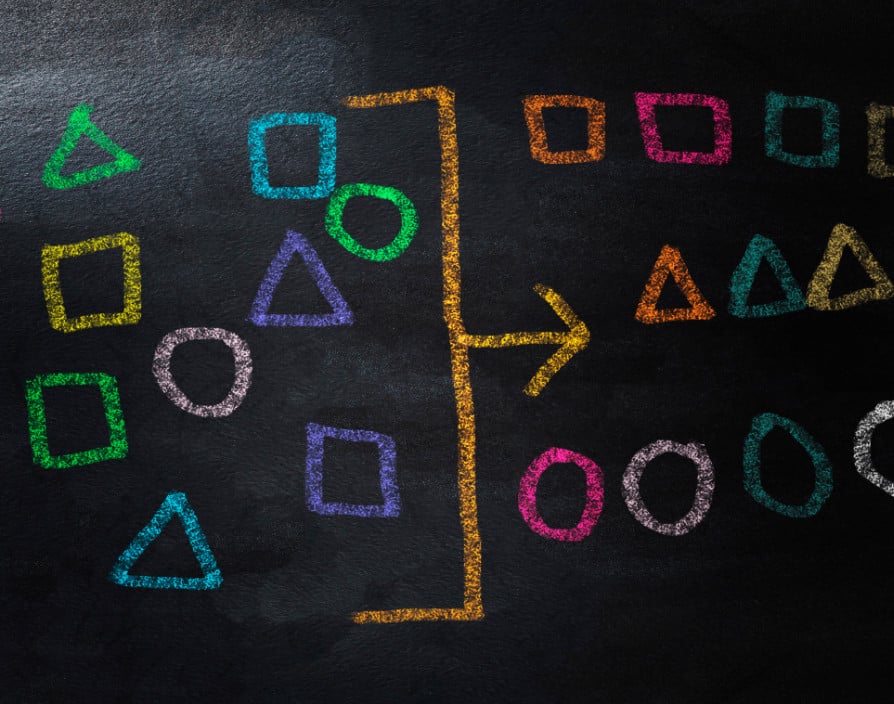Categorisation helps to make sense of our complex planet. The Victorians were masters of this, filling their ledgers and sample trays with the natural wonders of an ever-expanding world. And whilst labelling people and objects provides order and simplicity, how useful is this tool for designers and marketers?
To help teach the order of historical events, generations were taught English history as being a succession of Kings and Queens. However, our human desire to categorise events into ordered boxes alongside our perspective of the past from present-day, can create a distortion of understanding. We assume, subconsciously, that all reigns were the same and would follow the average modern life span; yet Edward V didn’t last a year, whilst Queen Victoria lasted 66. So, although categorisation is a useful tool in our understanding of things, we need other perspectives to build a fuller picture.
Of course, as we dig deeper, history becomes a fascinating interconnecting network of people, events and places, too complex for a child to comprehend. So, we do need ways to break things down, we just have to be aware of the implications of doing so.
As designers, we build a world that connects people with technology. Technology has been created by humans and so is ordered to our needs. An engine would not be designed to use both metric and imperial bolt sizes for example. Thread systems make the life of engineers easier, giving them a defined choice: M1, M2, etc. But the human side of design is not so straightforward. If we are designing a chair the choice of bolts are linear. But how high should it be? What weight should it carry? How much adjustment should it have? People are all so different! When I first started designing, we answered these questions by designing for the ‘average’ and we used a system of anthropometric data for the length of an arm, or leg, or the size of a hand. It was simple and repeatable – yet there was one fundamental flaw. The metrics were all based on US Marines; big, strong people clearly not representative of the general population. And even if it were, designing for the ‘average’ is fraught with problems and ignores huge swathes of the population who are just not ‘normal’.
The alternative is inclusive design: a topic that is slowly becoming a buzzword in the industry. As some brands search for ‘purpose’, they have seen an opportunity to improve the lives of people with disabilities. Designing for the extremities, rather than the centre of our user cohort, has real advantages to a successful business. First and foremost, it jolts us out of our self-centred thinking. It is natural for us to believe everyone else thinks and behaves the way we do and so there is a danger that we end up designing for ourselves. In our creative workshops, we create a small set of personas that represent the people we are designing for ‘ usually 3 different characters. We make them as different as we can within the market we are targeting. Designing from the perspective of each persona allows us to fill the gaps in our minds and our resulting creative output will have much broader appeal.
For example, we decided on three different child types for designing toys for Smarties: The Thinker, The Creator and The Dreamer. Each with very different needs, we kept their unique characteristics alive in our heads when designing and our resulting ‘Learn Through Play’ range had a much wider appeal because of it. In reality, there are no such children, and needs vary over time, place and situation and the toys actually combine aspects of all three. But the use of personas was a powerful tool to stretch our thinking and the design result was much more inclusive.
When one or more of those personas includes someone with disabilities, we not only have the opportunity to include their needs in the mix, but also the opportunity to push the usefulness of our design to a higher level. Good Grips kitchen utensils is a great example. Designed for people with dexterity and hand strength issues in mind, the resulting design is more ergonomic and comfortable for everyone to use and has been a long-standing commercial success. As our populations increasingly age, we will need to cater for many more disabilities if we are to retain our market share.
When I started in the world of branding, consumers were categorised by their social grade A, B, C1 etc, or more recently as Baby Boomers to Millennials, as a way of breaking down an infinitely diverse population into manageable chunks. The more recent trend is to categorise by attitude, and we are using Archetypes like the Hero and the Magician to chop up both the brand and the consumer. There are flaws and advantages to all of them, but as long as we see these classifications as tools to contrast and compare rather than boxes to put people in, we should embrace them because they aid diversity, connection and appeal.
We must fight our hard-wired tribal urges to define ourselves by who we are not, and embrace only those that are similar to us. We no longer put our ages on our CVs to avoid ageism and I’ve even heard of names being removed from CVs in the search for equality. But youth brings wide eyed wonder, age brings life long experience, different races and creeds brings rich culture. All are useful attributes in any organisation. They are benefits not hindrances and should be celebrated, not hidden.
The tribal aspect of our nature, our need to belong, is useful for entrepreneurs who have permission to design for themselves if they have enough like-minded consumers to kick start their brand. The challenge comes when they want to grow from their niche to mass market ‘ how do they broaden their appeal without losing their identity. Again, using a manageable set of personas is useful. If we can evolve our brand to meet the expectations of a small, but diverse set of personas we can feel confident the people in-between will be included as well.
As our understanding of the world expands and technology replaces Victorian trays with digital scanning and ledgers with AI, our ability to categorise in ever small units increases exponentially. However, simple methods of categorisation are still useful if they avoid averages, are deliberately diverse and countered with different perspectives.
“
Share via:



















































